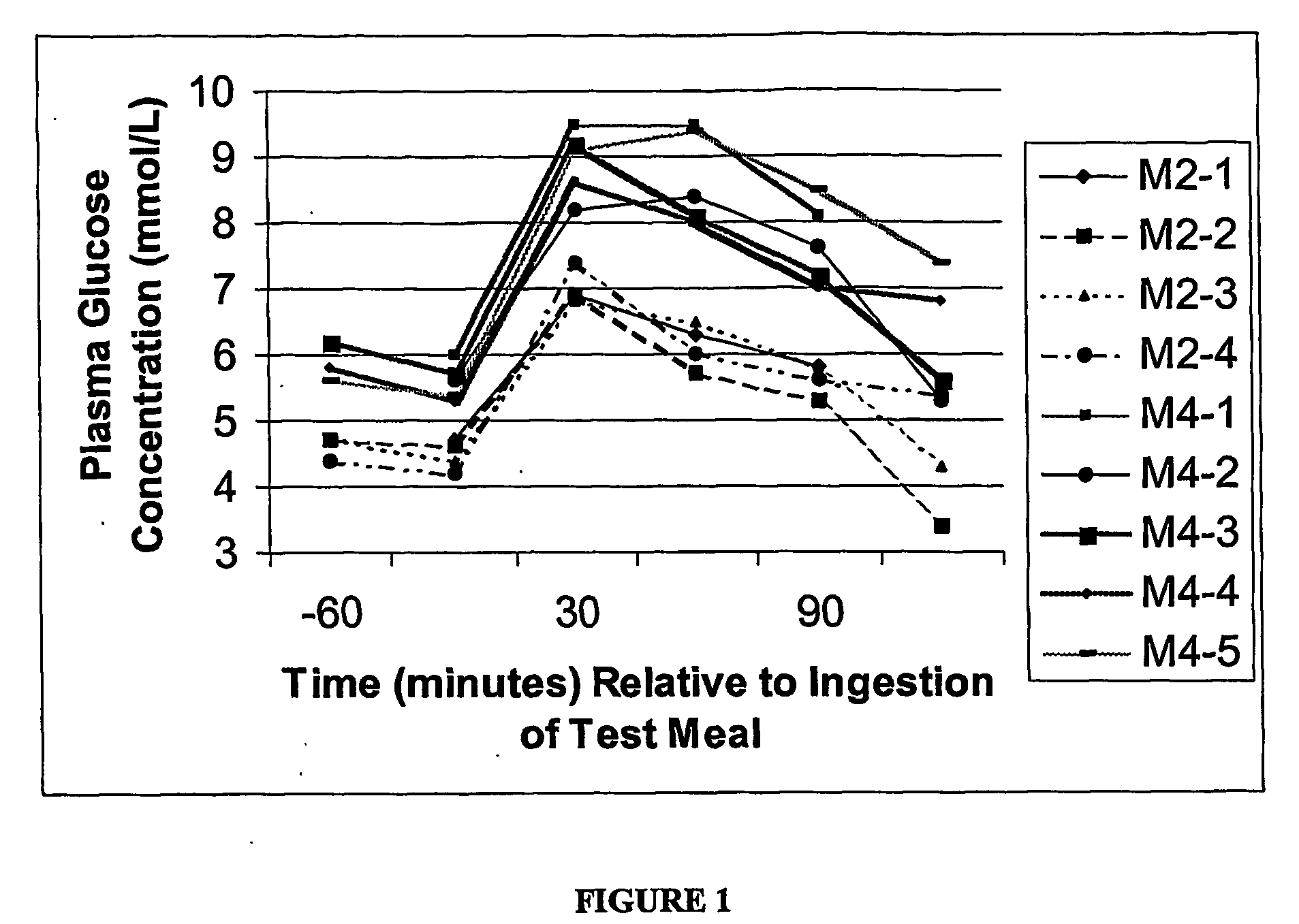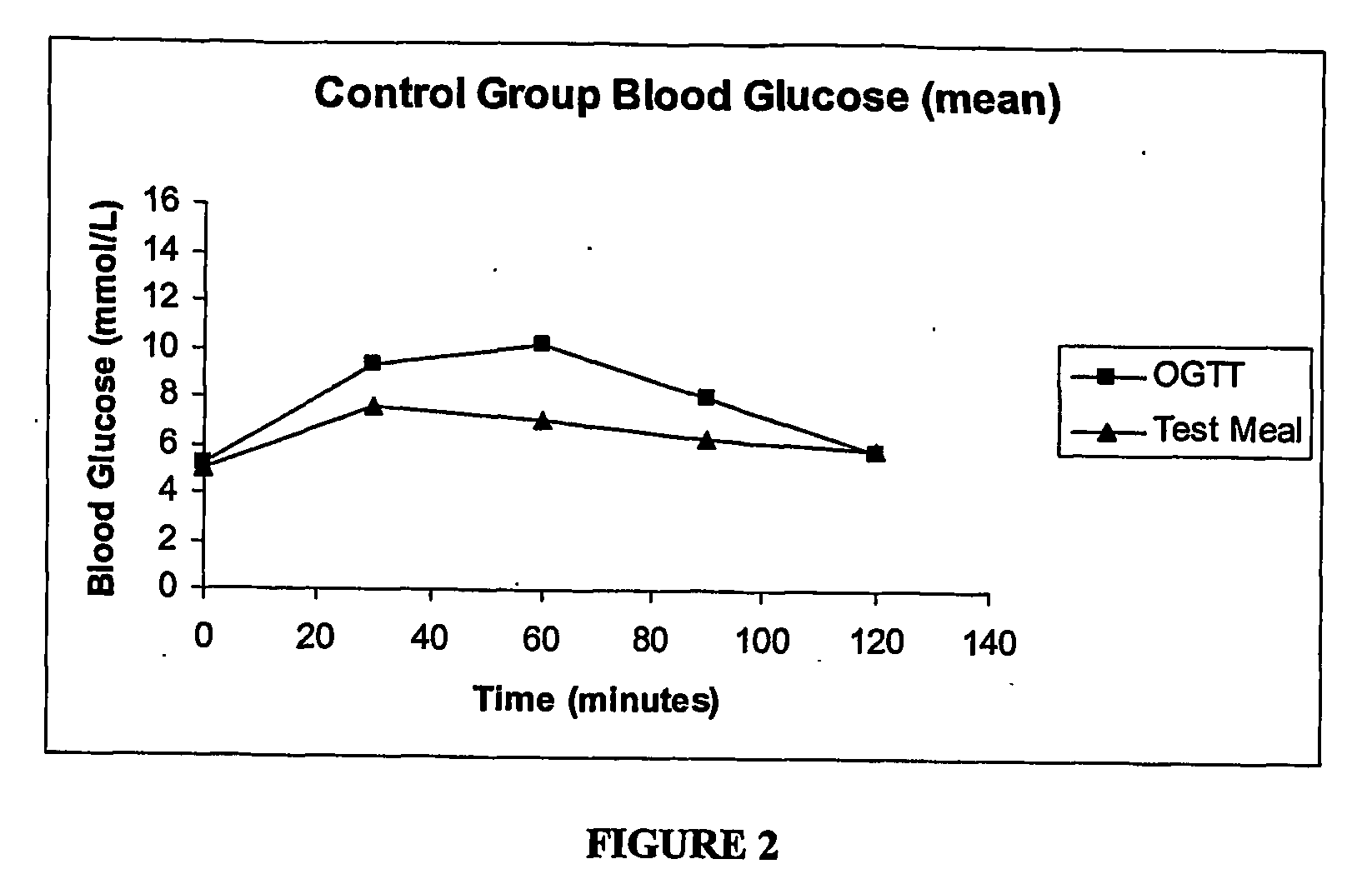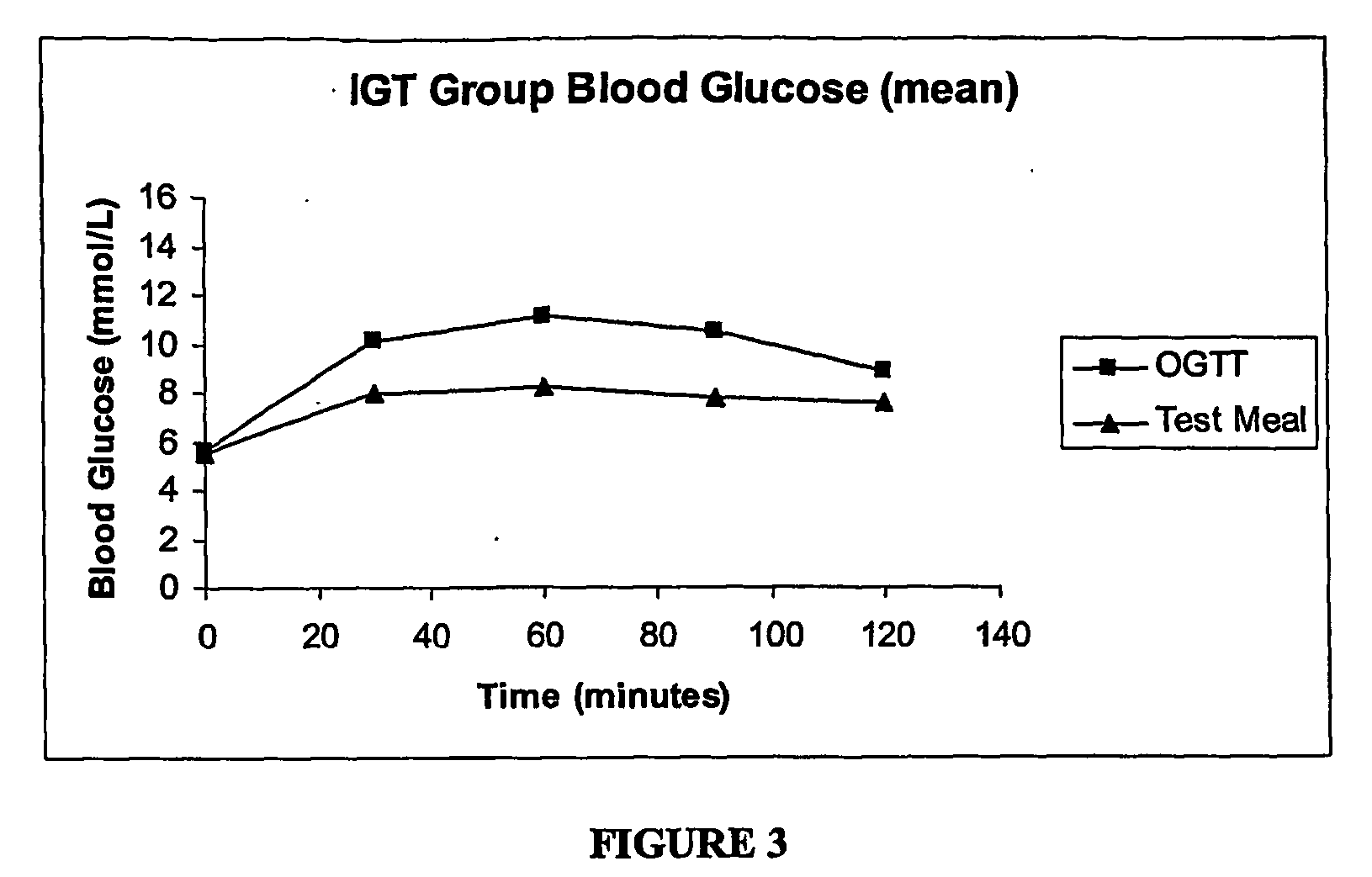Diagnostic composition for diabetes type-2 and impaired glucose tolerance, and methods of use
a technology for detecting the composition and the type of diabetes, applied in the direction of biocide, food preparation, plant growth regulators, etc., can solve the problems of low specificity and sensitivity of fasting or random glucose alone, significant morbidity and mortality, and widespread screening for impaired glucose tolerance and asymptomatic and/or undiagnosed type-2 diabetes. , to achieve the effect of low risk of diabetic shock associated with its consumption
- Summary
- Abstract
- Description
- Claims
- Application Information
AI Technical Summary
Benefits of technology
Problems solved by technology
Method used
Image
Examples
example 1
Solid Oral Carbohydrate Diagnostic Test Meal
[0156] The following components were combined in the amounts indicated below in Tables 1 and 2 to produce a wet product for use in preparing the test meal composition
TABLE 1Batter composition used for preparing test meal from WO 97 / 02050(Comparative)WeightIngredient(grams)Weight % totalWater4433.02Rolled oat flakes19.8214.88[9.82 polysaccharide(glycemic carbohydrate), (A)]Pin Milled Flour13.219.91[6.54 polysaccharide(glycemic carbohydrate), (B)]Pin Milled Starch13.219.91[8.52 polysaccharide(glycemic carbohydrate), (C)]Oat Bran6.604.95Liquid Honey9.557.17[5.59 mono and di-saccharides (D);2.15 glucose(glycemic carbohydrate), (E)]Canola Oil7.785.84Soy Protein5.734.3Sugar3.692.77 (F)[1.38 glucose(glycemic carbohydrate), (G)]Glycerin3.342.51Gluten2.862.15Baking Powder2.191.65Cinnamon1.100.82Salt0.120.09All spice0.040.03Total weight133.24Total wt. % glycemic28.41carbohydrate(A + B + C + E + G), ITotal wt. %33.24carbohydrates(A + B + C + D + F...
example 2
Glycemic Responses to the Test Meal
[0159] One normal (M2) and one IGT subject (M4), each in the fasted state, consumed the test meal composition of the present invention to provide a load of 50 grams of carbohydrate. Blood glucose measurements, utilizing a Bayer Glucometer and Elite test strips were performed at various time points before and after consumption of the test meal composition. The glucose measurements in mmol / L are shown in FIG. 1. The measurements were taken after consuming the test meal on four different occasions following an overnight fast.
example 3
Comparison of the Glycemic Responses to the Test Meal and to the Oral Glucose Tolerance Test
[0160] Three groups of adults (≧18 years of age) were studied: 11 nonobese (body mass index (“BMI”), BMI 2) normal subjects; 5 subjects with impaired glucose tolerance (“IGT”) within the last twelve months; and 13 subjects with non-insulin dependent (type 2) diabetes treated by diet alone. The subjects were studied after 10-12 hour overnight fasts on two separate mornings over a two-week period.
[0161] Subjects consumed either 75 grams of glucose in 300 ml orange-flavored water (Glucodex®) or a 100-gram dry carbohydrate diagnostic test meal. The order of tests was randomized, with half the subjects consuming the oral glucose meal test first, and half the test meal first.
[0162] The glucose solution was taken with 250 ml water, and test meal was taken with 450 ml water. Both tests were consumed within 10 minutes.
[0163] Both venous and capillary blood samples were obtained at each time point....
PUM
| Property | Measurement | Unit |
|---|---|---|
| weight | aaaaa | aaaaa |
| weight | aaaaa | aaaaa |
| glycemic index | aaaaa | aaaaa |
Abstract
Description
Claims
Application Information
 Login to View More
Login to View More - R&D
- Intellectual Property
- Life Sciences
- Materials
- Tech Scout
- Unparalleled Data Quality
- Higher Quality Content
- 60% Fewer Hallucinations
Browse by: Latest US Patents, China's latest patents, Technical Efficacy Thesaurus, Application Domain, Technology Topic, Popular Technical Reports.
© 2025 PatSnap. All rights reserved.Legal|Privacy policy|Modern Slavery Act Transparency Statement|Sitemap|About US| Contact US: help@patsnap.com



